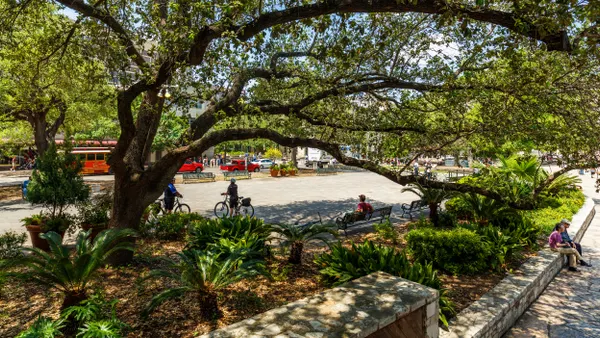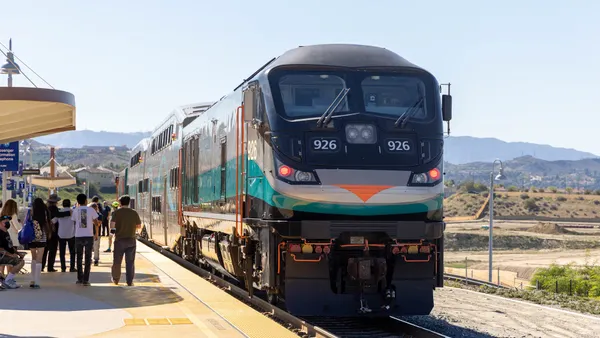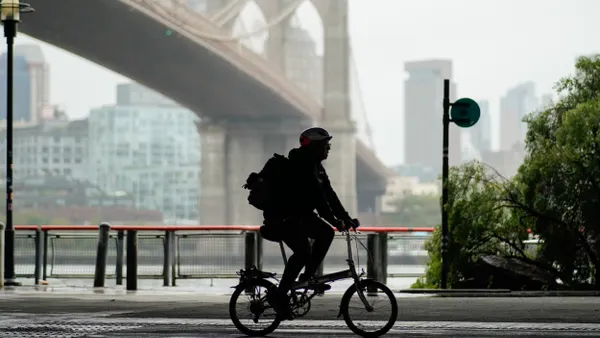Dive Brief:
- Portland, OR will soon roll out an official design book for protected bike lanes and has identified 450 miles of roadway that could accommodate protected bike infrastructure, Bike Portland reported.
- The design guide will offer seven basic designs for various streets and intersections, and will include an online spreadsheet so city planners and engineers can enter in a cross-section of streets and find possible design solutions.
- Portland Bureau of Transportation Bicycle Coordinator Roger Geller said during a presentation of the guide that protected bike lanes will now be the default in Portland, noting, "We’re going to start with a protected bike lane and you better have a really good reason why [we] can’t do it."
Dive Insight:
The design guide comes after a 2015 directive that required protected bike lanes be the norm on all Portland streets. That directive has largely meant bike lanes shielded by plastic "wands," or bollards, that can come dislodged, bent or damaged in ways that end up blocking bike lanes or other transit infrastructure. However the new design guide suggests bike lanes to be protected by curbs, concrete islands, planters or parked cars.
Portland recently ranked fourth in advocacy group People For Bikes’ city rankings, but got relatively low marks (2.9/5) for safety; presumably a new network of protected lanes would boost that score and the city’s overall perception.
As cities embrace bike culture and ridership increases, there are increasing calls for more protected infrastructure. Protesters in Philadelphia last year formed a human barrier to draw attention to a bike lane where a rider had been killed. A design guide like Portland’s can help cities plan ahead for protected lanes rather than simply forcing them onto existing roads. The Atlantic detailed how the National Association of City Transportation Officials’ Urban Bikeway Design Guide helped normalize some protected bike lanes, helping cities like New York and Washington, D.C. put them on busy streets. Portland’s more tailored guide will no doubt offer another roadmap for planners.
Of course, money is a barrier to deployment. According to Geller, it could cost between $70,000 per mile for a parking protected bike lane on a one-way road to as much as $2.8 million per mile to adapt a five-lane road to feature a concrete island.










